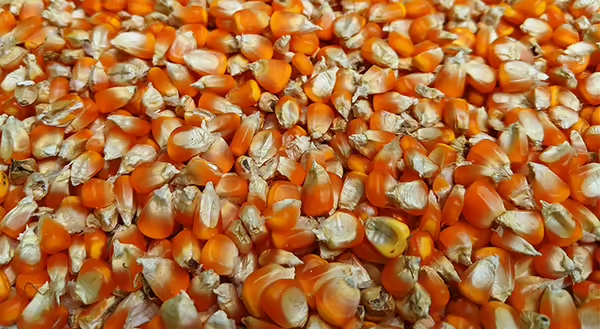
Stored grain should be kept at or near 35°F according to the experts. But over the past month in Central Illinois, the average daily temperature has varied 44°F – from a high daily average of 52° F to a low of 8°F.
Moisture in a filled grain bin moves from the warmed grain near the outside wall to the cooler grain in the center.
- Check your bin temperature twice a month in the winter.
- Keep an eye out for condensation on the inside of the roof.
- Watch for insect or mold activity. Insects go dormant at temperatures under 40°F and will be killed at prolonged temperatures below 20°F.
Solar radiation can generate a lot of heat
On a sunny winter day, the wall of a grain bin can absorb a lot of solar radiation. A single square foot of south-facing exposed wall can generate up to 1700 BTUs. That is a lot of extra heat being added to one side of a bin’s wall and the adjacent grain.
For long-term storage of grain, University of Illinois experts recommend coring the center of the bin to remove the concentration of fines. To core a bin, remove the grain peak to a minimum equal to one-third the diameter of the bin. For tall bins, it may require the core funnel to reach the bin wall for removal of the core fines.
Some like it hot…but not your bin. Keep it under 40°F
During winter, anytime the temperature in any part of the bin reaches 40°F, the grain should be cooled. Use aeration fans if possible on clear, dry days when the air temperature is 10 degrees to 15 degrees cooler than the grain.
How long will it take a bin to cool?
The amount of time it takes a cooling front to move through a bin depends on how much air the fan moves. You need to know the cfm rating of your fan, or cubic feet per minute, and how many bushels are in the bin. To calculate hours of cooling time in the winter, use the equation: 20 divided by the cubic feet per minute per bushel cfm/bu = hours
For example, a 20,000 bushel bin with a fan rated at 10,000 cfm (10,000 cfm divided by 20,000 bu = 0.5 cfm/bu) would take 40 hours for a cooling front to move through.
20 / 0.5 cfm/bu = 40 hours
Check out NDSU Grain Storage Specialist Ken Hellevang's article “Proper Grain Drying and Storage Critical" for more on proper winter and spring grain storage.
Want to get notified when new Acres of Knowledge posts are available? SIGN UP HERE!
Acres of Knowledge is a seasonal blog for Central Illinois farmers, ranchers and producers. University of Illinois Extension Local Foods Small Farms Educator Doug Gucker explores crop prices, planting and harvest trends, growing season updates, soil health topics and more. Build your best life. Trust Extension to help.
Doug Gucker is an Illinois Extension Local Food Systems and Small Farms Educator serving DeWitt, Macon and Piatt Counties in Central Illinois. He is a Certified Crop Advisor and works to help producers improve their profitability and sustainability with programs and feedback on farm management strategies, soil health, nutrient management, integrated pest management and grazing. Find Doug on Twitter at @SoilWaterDoug, by email at dgucker@illinois.edu or call 217.877.6042. Subscribe to his podcast Out Standing in the Field wherever you listen to podcasts.
